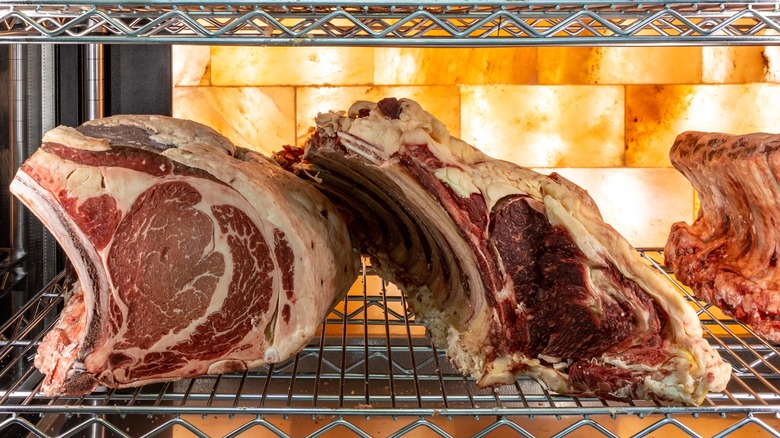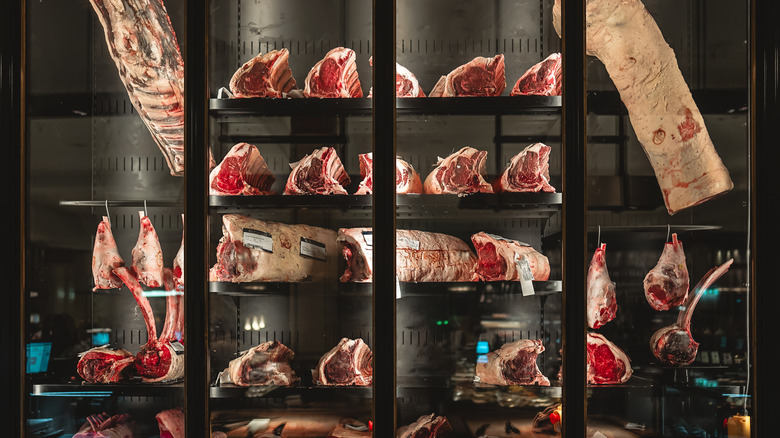The Dry-Aged Steak Trend Could Actually Be Centuries Old
It may seem like the newest fad in fine dining, or you're seeing it more frequently at your local butchery, but dry-aged beef and steak is everywhere. You can even find dry-aged steak at some Whole Foods Market locations. Like cheese or wine, dry-aged beef tastes better after it's been given a few days to mature. The dry-aging process is basically controlled decaying in order to take advantage of its benefits, namely tenderization and deeper flavor. After 14 – 28 days in a highly controlled environment – the temperature and humidity levels are monitored, and very precise. As moisture evaporates from the muscle, enzymes break down the meat, a byproduct of which is glutamate – also known as MSG and a major source of umami, according to Michelin Guide. Aged cuts of beef are tenderized and flavorful, with many likening the flavor to cheese, but the longer the beef ages, the funkier it gets, so most recommend not going past 45 days, according to Robb Report. Any mold that grows on the steak is the good kind of mold – think bleu cheese – and gets trimmed off before cooking.
The modern dry-aging process goes back to the 1950s, according to Chicago Steak Company, when butchers realized steaks were more tender when dry-aged, but the practice goes back even further – possibly centuries.
People have rediscovered the flavorful benefits of a dry-aged steak
In a museum in Europe, there's a still life painting by Rembrandt called "Slaughtered Ox," and it was painted in 1655 – well before high-end steakhouses started dry-aging their ribeyes. It depicts a bull or ox carcass, splayed and hanging to dry. Rembrandt wasn't the only one depicting the skill of butchery at the time – Italian Renaissance painter Annibale Carracci painted a butcher's shop, showing a butcher cleaning his knife next to a hanging carcass, per Yale University Press. Before refrigeration, meat mongers would hang the meat up to dry in order to preserve it. It wasn't out of the question to walk by a butcher shop window and see halves or quarters of beef hanging there, so most of the beef consumed had been aged at least somewhat.
According to Michelin Guide, American butcher shops have been dry-aging beef for a while – at least 90 years. It was the advent of refrigeration, vacuum packing, and the consolidation of butcheries and meat processing plants that meant that meat was arriving at butchers in boxes of cuts like loins, rounds, prime ribs, and so on, per Flannery Beef. Wet aging in vacuum packs produces a different flavor from dry aging that people grew accustomed to, according to US Food.
With the resurgence of back-to-basic kitchen skills like pickling and canning and calling it artisanal, people have rediscovered the dry-aging process, and for the sake of steak lovers everywhere, it's great.

